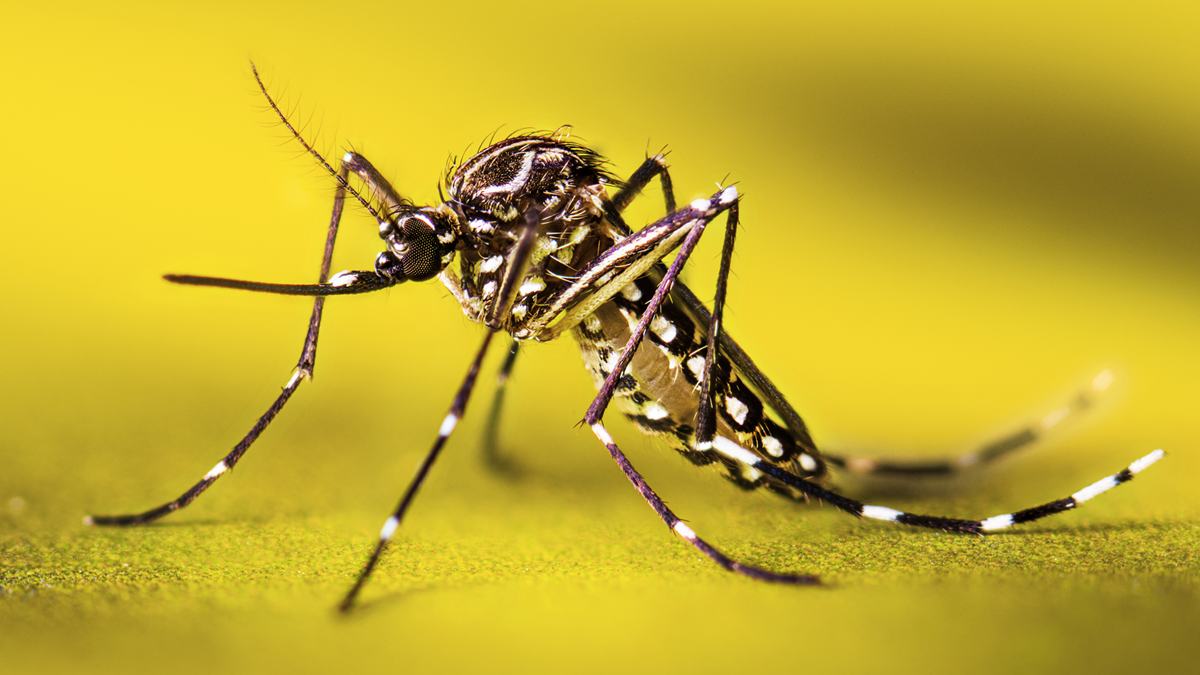World's Deadliest Animals: A teacher asked his students, "Which is the most dangerous animal on Earth?" The students considered it a straightforward question and quickly started shouting answers like lions, tigers, and sharks.
So, what's your opinion on the matter? Do you also think the same way as the students, or do you have a different perspective on which animal is the most dangerous?
Here's a small hint for you: (It's not a lion, a tiger, a wolf, a tiger shark, an orca whale or a green anaconda.)
We can feel the curiosity growing as you attempt to think creatively. Maybe the solution is a smaller, less visible creature that is more dangerous than its size suggests. But what is it? Let’s uncover!
Check Out| List of the Top 15 Most Dangerous Places in the World
Which is the Most Dangerous Animal in the World?

Source: CDC
The most feared animal in the world is none other than the 'mosquitoes'. These tiny insects are responsible for spreading deadly diseases such as malaria, dengue fever, and the Zika virus. Because of their rapid reproduction and environmental adaptability, they pose a serious threat to human health everywhere.
A survey found that mosquitoes spread diseases like malaria, which kill about 725,000 people annually. But here's a small twist: male mosquitoes aren't as dangerous as female mosquitoes. The female mosquito is the one that feeds on blood to nourish her eggs.
In contrast, the male mosquitoes primarily feed on nectar. This behaviour is what makes female mosquitoes the primary vectors for transmitting diseases to humans.
| Disease/Virus | Primary Mosquito Vector(s) | Symptoms | Potential Severe Outcomes | Geographic Distribution | Prevention |
| Viral Diseases | |||||
| Dengue Fever | Aedes aegypti, Aedes albopictus | High fever, severe headache, joint and muscle pain, rash | Dengue hemorrhagic fever, dengue shock syndrome (life-threatening) | Tropical and subtropical regions worldwide | Mosquito bite prevention (repellents, protective clothing, eliminating breeding sites) |
| Zika Virus | Aedes aegypti | Mild fever, rash, joint pain, conjunctivitis (often asymptomatic) | Birth defects (microcephaly) in babies of infected mothers, Guillain-Barré syndrome | Tropical and subtropical regions worldwide | Mosquito bite prevention, safe sex practices |
| Chikungunya | Aedes aegypti, Aedes albopictus | Sudden fever, severe joint pain, headache, muscle pain, joint swelling, rash | Prolonged and debilitating joint pain | Tropical and subtropical regions in Africa, Asia, the Americas, and Europe | Mosquito bite prevention |
| Yellow Fever | Aedes aegypti | Fever, chills, headache, back pain, fatigue, nausea, vomiting | Jaundice, bleeding, shock, organ failure (severe cases) | Tropical regions of Africa and South America | Vaccination, mosquito bite prevention |
| West Nile Virus (WNV) | Culex species | Most asymptomatic: fever, headache, body aches, joint pain, vomiting, rash (in some cases) | Severe neurological illness (encephalitis, meningitis), death (rare) | North America, Europe, West Asia, and Australia | Mosquito bite prevention |
| Japanese Encephalitis (JE) | Culex species | Most asymptomatic or mild; fever, headache (in symptomatic cases) | Encephalitis (seizures, coma, death or permanent neurological damage) | Asia and parts of the Western Pacific | Vaccination (in endemic areas), mosquito bite prevention |
| La Crosse Encephalitis (LAC) | Aedes triseriatus | Mild flu-like illness (most cases); fever, headache, nausea, vomiting, tiredness | Encephalitis (seizures, coma, long-term neurological problems, especially in children) | Primarily in the upper Midwest, mid-Atlantic, and southeastern United States | Mosquito bite prevention, eliminating breeding sites (tree holes, containers holding water) |
| Eastern Equine Encephalitis (EEE) | Various species (Culiseta melanura primary) | Sudden onset of fever, chills, malaise, and headache (mild cases) | Severe encephalitis (high mortality, neurological damage) | Eastern North America | Mosquito bite prevention |
| Western Equine Encephalitis (WEE) | Various species (Culex tarsalis primary) | Mild flu-like illness (most cases); fever, headache (in symptomatic cases) | Encephalitis (lower mortality than EEE, but can cause neurological damage) | Western North America | Mosquito bite prevention |
| St. Louis Encephalitis (SLE) | Culex species | Mild flu-like illness (most cases); fever, headache (in symptomatic cases) | Encephalitis, meningitis (more severe in older adults) | North and South America | Mosquito bite prevention |
| Parasitic Diseases | |||||
| Malaria | Anopheles (female) | Fever, chills, headache, muscle aches, fatigue | Severe anaemia, cerebral malaria, organ failure, death | Tropical and subtropical regions worldwide | Antimalarial drugs (prophylaxis and treatment), mosquito bite prevention (bed nets, repellents, etc.) |
| Lymphatic Filariasis | Culex, Anopheles, Aedes | Often asymptomatic initially; later: swelling (lymphedema, elephantiasis), hydrocele | Disability, social stigma | Tropical and subtropical regions of Asia, Africa, the Pacific Islands, and the Americas | Mass drug administration (MDA) to eliminate transmission, mosquito bite prevention, hygiene practices for managing lymphedema |
Explore| Top 10 Most Dangerous Viruses in the World
List of the Top 10 Deadliest Animals in the World
Here’s the list of the top 10 most dangerous animals in the world:
| Rank | Animal | Deaths per year |
| 1 | Mosquito | 725,000 |
| 2 | Humans (homicides only) | 400,000 |
| 3 | Snake | 138,000 |
| 4 | Dogs (rabies) | 59,000 |
| 5 | Assassin Bugs (Chagas disease) | 10,000 |
| 6 | Scorpions | 3,300 |
| 7 | Crocodiles | 1,000 |
| 8 | Elephants | 600 |
| 9 | Hippos | 500 |
| 10 | Lions | 200 |
Even though they look small, mosquitoes are the most dangerous animals because they spread deadly sicknesses like malaria, killing around 725,000 people each year. The biggest reason for this huge number is that they carry and pass on these dangerous diseases.

Source: Depositphotos
Next are the Humans who execute other humans, causing the next highest number of deaths, about 400,000 each year.
Snakes are third, killing about 138,000 people a year, mostly by biting with their venom. Dogs, even though we keep them as pets, cause around 59,000 deaths, mostly from spreading rabies.
Assassin bugs, which carry Chagas disease, kill about 10,000 people each year. Other animals on the list, like scorpions, crocodiles, elephants, hippos, and lions, kill fewer people but are still dangerous.
What's Next| Most Dangerous Asteroids in History
Comments
All Comments (0)
Join the conversation